

| A modern Atlas of Nottinghamshire Millipedes | ||
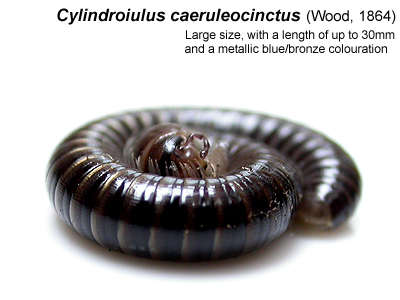 |
This recently updated
(January 2024) Atlas of Nottinghamshire
Millipedes, follows the same format as used in our
original publication 'A modern Atlas of
Nottinghamshire Centipedes'. Despite their great abundance, Millipedes (Diploda) have remained largely neglected in terms of their identification and study in Nottinghamshire and until only recently, very little information was available regarding the county's species, or their distribution. But thanks again to Tony Barber of the British Myriapod and Isopod Group (who also sent us the BMIG's Centipede records for VC56) it is now possible for us to produce and publish a long overdue modern atlas of Nottinghamshire Millipedes. Most of the records in the BMIG's database, are Tony's own records, or those of P.E. Jones. Both recorded Millipedes in the Bingham area of the county in the late 1960's and early 1970's, although Tony also recorded Millipedes from a number of other Nottinghamshire locations. |
|
| ..... | ||
| Records sent to us by the BMIG and a slowly growing group of naturalists, coupled with our own records from the Mansfield and Sherwood Forest area over the past few years, now means that we are actually developing a more realistic picture of species distribution within Nottinghamshire. The distribution of Millipedes does tend to reflect recorder location, so the distribution of many species may seem to be quite patchy. | ||
| ..... |
| Millipedes recently recorded as
being new to Nottinghamshire Following on from the increased interest in Nottinghamshire Millipedes, a good number of new species have been added to the county list in the last few years. Millipedes recently recorded new to VC56 (Nottinghamshire) include Chordeuma proximum, Choneiulus palmatus and Boreoiulus tenuis in 2015, Macrosternodesmus pallicola in 2016, Melogona scutellaris in 2017, Leptoiulus belgicus and Brachychaeteuma bagnalli in 2018 - the last three species all coming from a suburban Mapperley garden. Nearby, Nottinghamshire's first record of Oxidus gracilis, came when one was found underneath a plant pot stood on bark chippings situated underneath a number of large conifers at a Mapperley garden centre in November 2022. |
||
| ..... | ||
| None of
the UK's three species of Brachychaeteuma
millipedes had ever been recorded in Nottinghamshire
before early January 2016, so the record of an
unidentified Brachychaeteuma from Tim Sexton's
Attenborough garden was especially welcome. Unfortunately, two of the three UK Brachychaeteuma species are extremely difficult to determine to species level and require an adult male to be able to do so. Even then, there is great variability in the male gonopods and after Tim's Attenborough record, several Brachychaeteuma millipedes were subsequently recorded at Pleasley Vale by Derek Whiteley and from Mansfield Woodhouse and Mapperley gardens by Dilys and myself . A succession of records from the suburban Mapperley garden since December 2016, eventually culminated in the finding of a male two years later, which finally allowed us to identify the species occurring there at least, as being Brachychaeteuma bagnalli. |
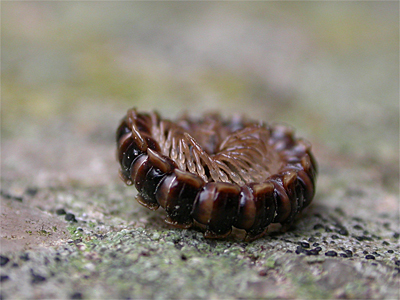 |
|
| Oxidus gracilis | ||
| Current checklist of Nottinghamshire Millipedes |
| Species list accurate as of January 2024 |
| ..... |
| POLYXENIDAE |
| Polyxenus lagurus (Linnaeus, 1758) |
| ..... |
| GLOMERIDAE |
| Glomeris marginata (Villers, 1789) |
| ..... |
| POLYDESMIDAE |
| Brachydesmus superus (Latzel, 1884) |
| Polydesmus angustus (Latzel, 1884) |
| Polydesmus coriaceus (Porat, 1871) |
| Polydesmus denticulatus (C.L.Koch, 1847) |
| Polydesmus inconstans (Latzel, 1884) |
| ..... |
| TRICHOPOLYDESMIDAE |
| Macrosternodesmus palicola (Brölemann, 1908) |
| Ophiodesmus albonanus (Latzel, 1895) |
| ..... |
| PARADOXOSOMATIDAE |
| Oxidus gracilis (C.L.Koch, 1847) |
| ..... |
| CHORDEUMATIDAE |
| Chordeuma proximum (Ribaut, 1913) |
| Melogona scutellaris (Ribaut, 1913) |
| ..... |
| BRACHYCHAETEUMATIDAE |
| Brachychaeteuma bagnalli (Verhoeff, 1911) |
| ..... |
| CRASPEDOSOMATIDAE |
| Nanogona polydesmoides (Leach, 1814) |
| ..... |
| BLANIULIDAE |
| Choneiulus palmatus (Nemec, 1895) |
| Proteroiulus fuscus (Am Stein, 1857) |
| Blaniulus guttulatus (Fabricius, 1798) |
| Archiboreoiulus pallidus (Brade-Birks, 1920) |
| Boreoiulus tenuis (Bigler, 1913) |
| .......... |
| JULIDAE |
| Allajulus nitidus (Verhoeff, 1891) |
| Julus scandinavius (Latzel, 1884) |
| Ophyiulus pilosus (Newport, 1842) |
| Leptoiulus belgicus (Latzel, 1844) |
| Cylindroiulus britannicus (Verhoeff, 1891) |
| Cylindroiulus caeruleocinctus (Wood, 1864) |
| Cylindroiulus punctatus (Leach, 1815) |
| Brachyiulus pusillus (Leach, 1815) |
| Ommatoiulus sabulosus (Linnaeus, 1758) |
| Tachypodoiulus niger (Leach, 1814) |
| NEMASOMATIDAE |
| Nemasoma varicorne (C.L.Koch, 1847) |
| Common names Some Millipedes do have well used common names which we have decided to list here, as common names can make a species more 'user friendly' to those new to natural history. Those species with well used common names include the following list. Polyxenus lagurus Bristly Millipede, Blaniulus guttulatus Spotted Snake Millipede, Proteroiulus fuscus Snake Millipede, Cylindroiulus punctatus Blunt-tailed Snake Millipede, Ommatoiulus sabulosus Striped Millipede, Tachypodoiulus niger White-legged Snake Millipede, . and Polydesmus angustus Flat-backed Millipede. |
 |
|||
| ..... | ||||
| The
Nottinghamshire distribution maps The distribution maps are largely built from the records of Tony Barber, P.E. Jones and an increased number of interested naturalists in recent years. We have avoided using historical records sourced from J.W. Carr's book "The Invertebrate Fauna of Nottinghamshire", feeling that a modern atlas is more representative of the current distribution of our Millipede fauna and far more useful. The maps are up to date, as of January 2024. |
||||
| DIPLODA - POLYXENIDA - Polyxenidae | DIPLODA - GLOMERIDA - Glomeridae | |
| Polyxenus lagurus (Linnaeus, 1758) | Glomeris marginata (Villers, 1789) | |
| Nottinghamshire
distribution: Probably fairly widespread and
severely under-recorded. Found under loose mortar on stone
walls and Churches etc.
Our initial research showed no modern Nottinghamshire records of Polyxenus lagurus, more commonly known as the Bristly Millipede. No records are listed by the British Myriapod and Isopod Group, but the NBN Gateway lists records for Attenborough NR in 1967 and 1970 (Evans, M.) and it has been found there more recently. Other records have followed the discovery of Polyxenus lagurus on a wall at Church Warsop in 2015 (Pendleton, T.A. and Pendleton, D.T.) with records from Woodborough Church and Southwell Minster. |
Nottinghamshire distribution: Widespread and common, especially within woodland lying on Sherwood Sandstone, where it can be found under logs. Most records are from sites well north of Nottingham, in the Mansfield and Sherwood Forest areas and extending towards Retford, but there are records from around Bunny in south Nottinghamshire. | |
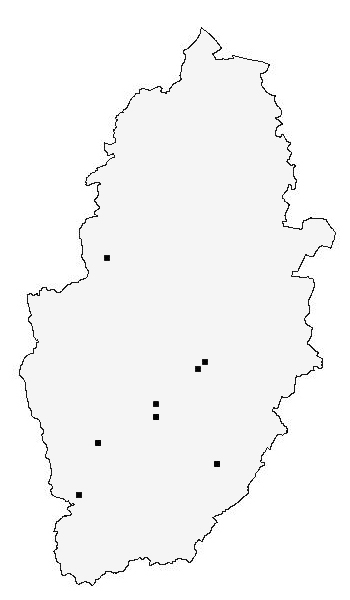 |
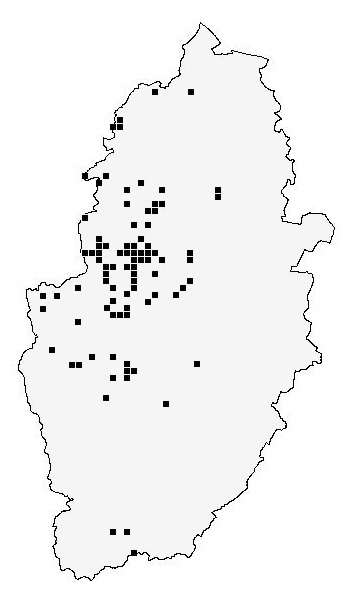 |
|
| ...................................................................................................... | ||
| .................................................................................................... | ......................................................................................................... | |
| DIPLODA - POLYDESMIDA - Polydesmidae | DIPLODA - POLYDESMIDA - Polydesmidae | |
| Brachydesmus superus (Latzel, 1884) | Polydesmus angustus (Latzel, 1884) | |
| Nottinghamshire distribution: Common, with most Nottinghamshire records coming from the Bingham area, but also recorded from Colwick Woods in 1969 (Jones, P.E.). In the north of the county, this Millipede has been infrequently recorded, but there are records from Treswell Wood, Lound Wood, Sherwood Forest CP and Kirton Wood. | Nottinghamshire distribution: The most common and widespread of all the Polydesmus Millipedes recorded in Nottinghamshire, which are all visually identical and needing microscopic examination to correctly determine identification. | |
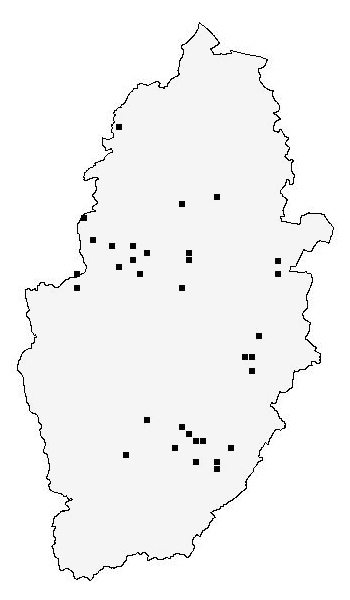 |
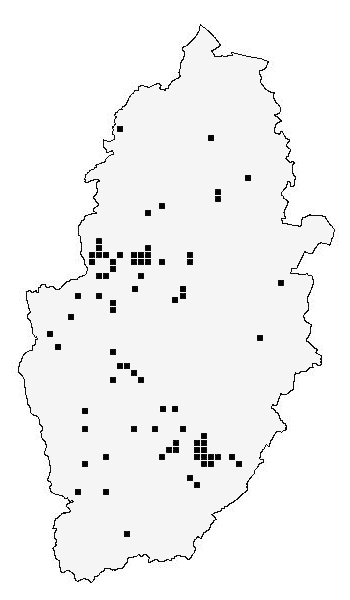 |
|
| DIPLODA - POLYDESMIDA - Polydesmidae | DIPLODA - POLYDESMIDA - Polydesmidae | |
| Polydesmus coriaceus (Porat, 1871) | Polydesmus denticulatus (C.L.Koch, 1847) | |
| Nottinghamshire distribution: Currently just a handful of areas of the county where it is known to occur. Examination of any Polydesmus sp, may prove that this species is more common. | Nottinghamshire distribution: Proving to be widespread, with scattered records from a large area of southern Nottinghamshire. Examination of any Polydesmus sp, will certainly prove that this species is more common than records currently suggest. | |
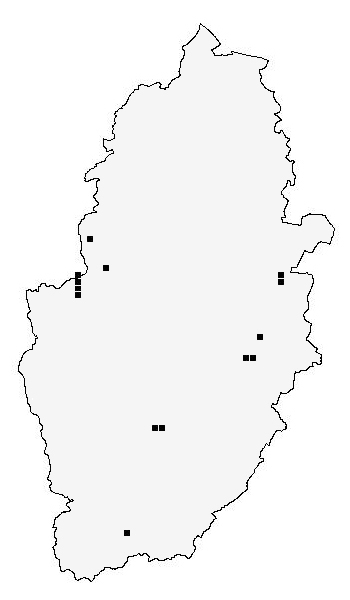 |
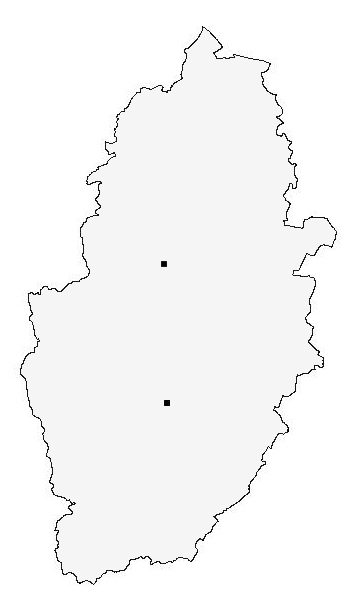 |
|
| DIPLODA - POLYDESMIDA - Polydesmidae | DIPLODA - POLYDESMIDA - Macrosternodesmidae | |
| Polydesmus inconstans (Latzel, 1884) | Macrosternodesmus palicola (Brölemann, 1908) | |
| Nottinghamshire distribution: Proving to be widespread, with scattered records from a large area of southern Nottinghamshire. Examination of any Polydesmus sp, will certainly prove that this species is more common than records currently suggest. | Nottinghamshire
distribution: Presently with just three county records, this
millipede is most often found in synanthropic habitats such as gardens
and churchyards etc, where it is usually
found under large stones in the Winter and Spring. Its small size
(around 4mm) means it is easily missed. It was discovered as new to Nottinghamshire at Pleasley Vale (Whiteley, D.) in 2016 and there have been follow up records from the Nottinghamshire Wildlife Trust's Attenorough NR (Sexton, T.) and a garden in Toton (Lygo, B.) in March 2018. |
|
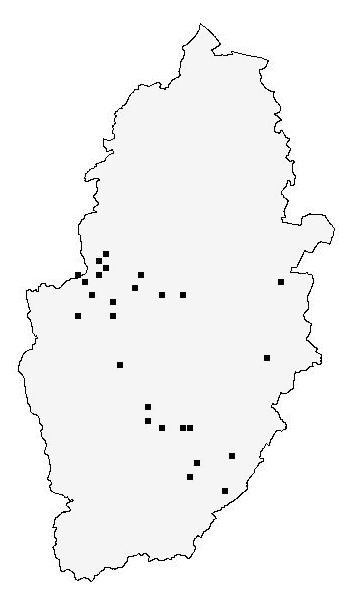 |
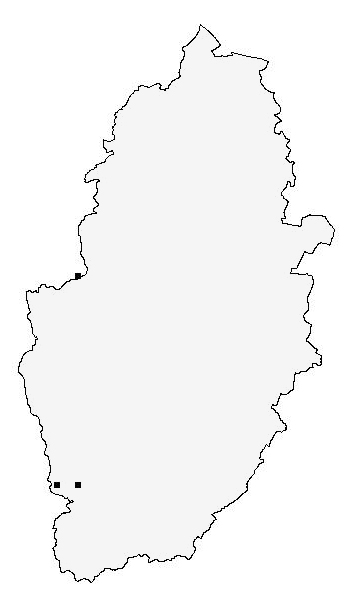 |
|
| DIPLODA - POLYDESMIDA - Macrosternodesmidae | DIPLODA - POLYDESMIDA - Paradoxomatidae | |
| Ophiodesmus albonanus (Latzel, 1895) | Oxidus gracilis (C.L.Koch, 1847) | |
| Nottinghamshire distribution: Rare in Nottinghamshire and the only known records are from Bingham in 1969 (Jones, P.E. and Barber, A.) and most recently from Mapperley and Market Warsop gardens in 2016 (Pendleton, T.A. and Pendleton, D.T.). | Nottinghamshire distribution: Only recorded new to Nottinghamshire when a single specimen was found underneath a plant pot stood on bark chippings underneath a number of large conifers at a Mapperley garden centre in late November 2022. | |
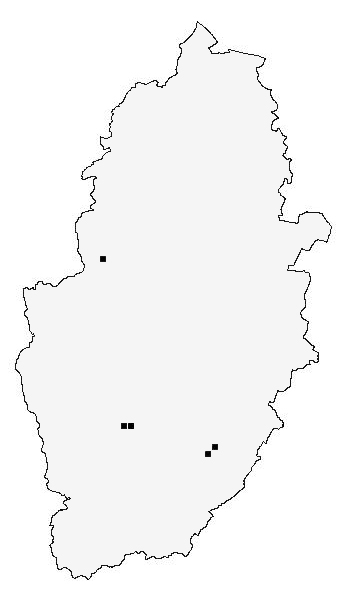 |
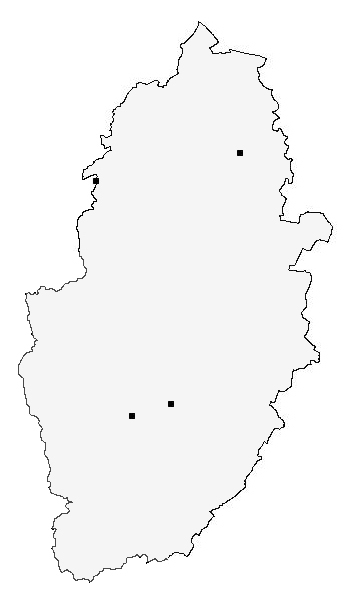 |
|
| DIPLODA - CHORDEUMATIDA - Chordeumatidae | DIPLODA - CHORDEUMATIDA - Chordeumatidae | |
| Chordeuma proximum (Ribaut, 1913) | Melogona scutellaris (Ribaut, 1913) | |
| Nottinghamshire distribution: Recorded new to Nottinghamshire in in January 2015, from a disused railway line near King's Clipstone (Pendleton, T.A. and Pendleton, D.T.) and recorded again by the same observers in 2017 from Clipstone Old Quarter in Sherwood Forest, just over a mile away and sightings continue at further Sherwood Forest sites. | Nottinghamshire distribution: Unknown in Nottinghamshire until several individuals were recorded from under long-standing rockery stones in a Mapperley garden in February 2017 (Pendleton, T.A. and Pendleton, D.T.). | |
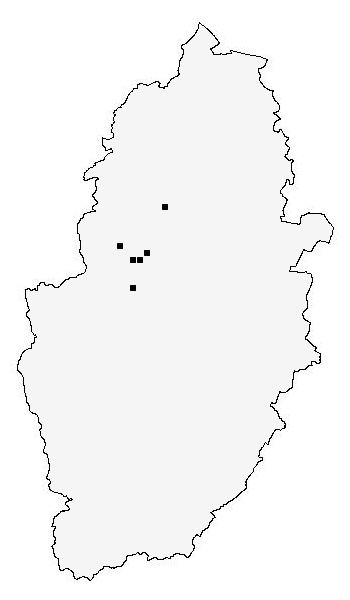 |
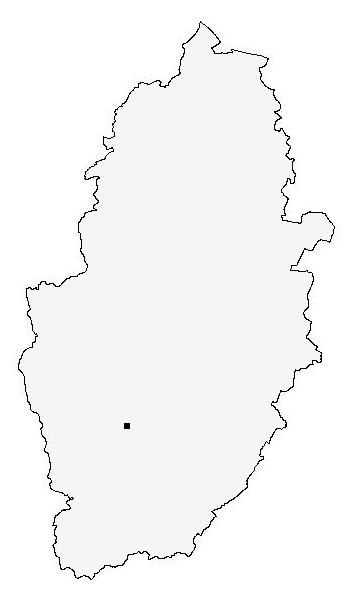 |
|
| DIPLODA - CHORDEUMATIDA - Brachychaeteumatidae | DIPLODA - CHORDEUMATIDA - Craspedosomatidae | |
| Brachychaeteuma bagnalli (Verhoeff, 1911) | Nanogona polydesmoides (Leach, 1814) | |
| Nottinghamshire distribution: Not recorded from the county until three records within 2016. Until December 2018, all examples had proved to be female and undeterminable to species, but are suspected to be Brachychaeteuma bagnalli. Records of unidentified Brachychaeteuma sp are from Attenborough in January 2016, (Sexton, T.), Pleasley Vale in February 2016 (Whiteley, D.) and Mansfield Woodhouse in March 2017 (Pendleton, T.A. and Pendleton, D.T.). Brachychaeteuma bagnalli was confirmed as being the species found at Mapperley in December 2018 (Pendleton, T.A. and Pendleton, D.T.). | Nottinghamshire distribution: Possibly more widespread than the current distribution map would suggest. This Millipede has been well recorded from around Bingham, but only recently found in Sherwood Forest and at Lound Wood at Eakring. However, the number of known sites is increasing. | |
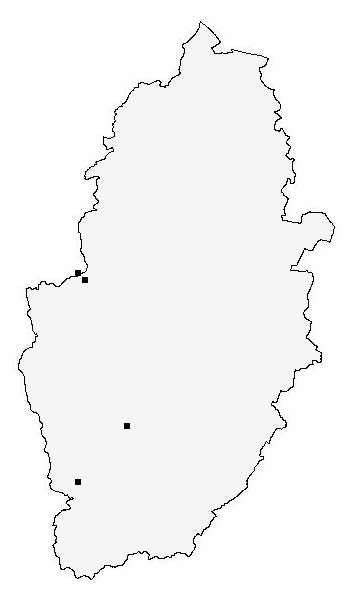 |
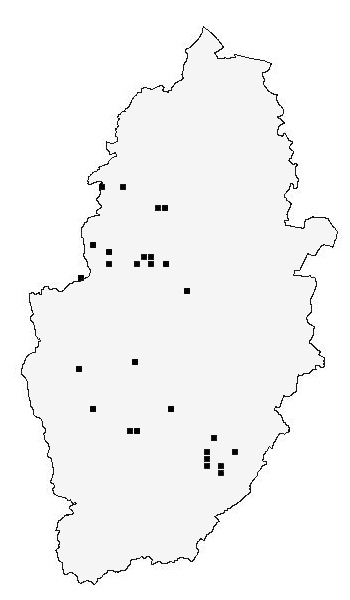 |
|
| ................................................................................................. | ||
| DIPLODA - CHILOGNATHA -JULIFORMIA - JULIDA - Blaniulidae | DIPLODA - CHILOGNATHA -JULIFORMIA - JULIDA - Blaniulidae | |
| Choneiulus palmatus (Nemec, 1895) | Proteroiulus fuscus (Am Stein, 1857) | |
| Nottinghamshire distribution: Impossible to separate from Proteroiulus fuscus and Nopoiulus kochii, without the aid of a microscope. It seems very much a Millipede of buildings and urban sites, but was still a surprise find underneath the loose mortar of an old stone wall at Church Warsop in late March 2015 (Pendleton, T.A. and Pendleton, D.T.). There were no records prior to this, but it was recorded from the grounds of the Nottingham City Hospital (Pendleton , T.A. and Pendleton, D.T.) in 2017. | Nottinghamshire distribution: A very common Millipede which is widespread in Nottinghamshire, especially in the Sherwood Forest area. It is usually found under bark in wooded areas, but is not restricted to such habitat. | |
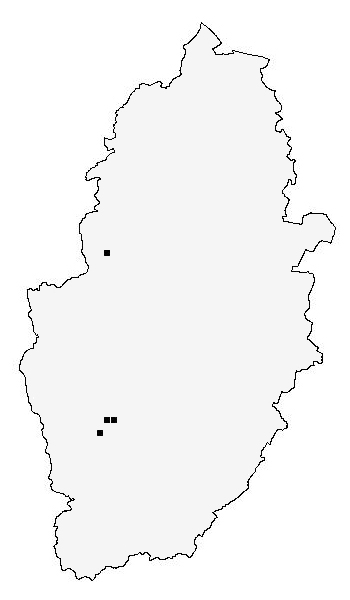 |
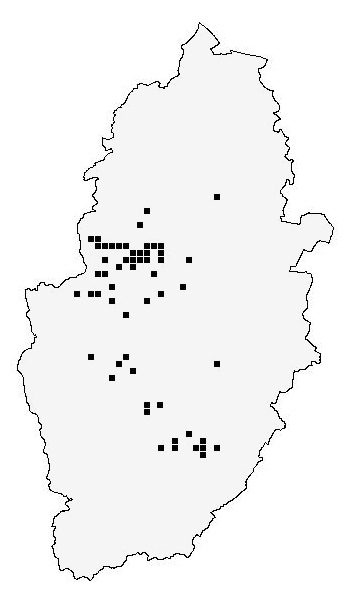 |
|
| DIPLODA - JULIDA - Blaniulidae | DIPLODA - JULIDA - Blaniulidae | |
| Blaniulus guttulatus (Fabricius, 1798) | Archiboreoiulus pallidus (Brade-Birks, 1920) | |
| Nottinghamshire distribution: Widespread in woodland, but also found in other habitats, including suburban gardens. There are scattered records from Newark, Bingham, Bunny Old Wood and from The Meadows area of Nottingham (Barber, A.) and it is generally common at Sherwood Forest. There are several similar species which can cause identification difficulties. | Nottinghamshire distribution: A species found only in the south-east of Nottinghamshire. All the county's records have come from Bingham (where it was widely recorded) but there are Trent Valley records from Shelford and Radcliffe-on-Trent (Jones, P.E.) in 1969 and from Attenborough NR in 2017 (Sexton, T.). | |
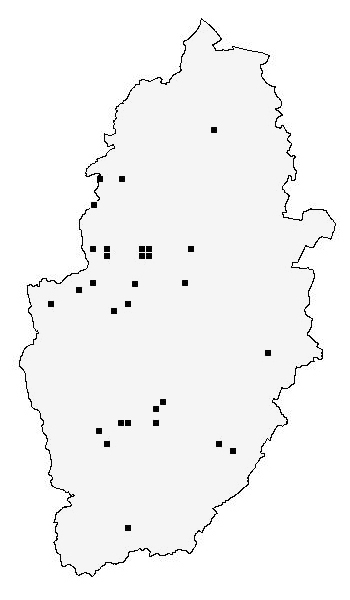 |
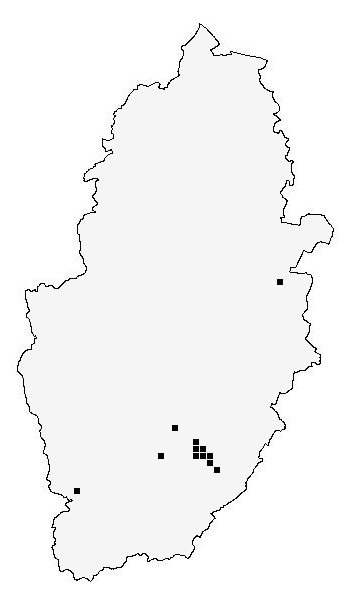 |
|
| DIPLODA - JULIDA - Blaniulidae | DIPLODA - JULIDA - Julidae | |
| Boreoiulus tenuis (Bigler, 1913) | Julus scandinavius (Latzel, 1884) | |
| Nottinghamshire distribution: Uncommon and presumably a much under-recorded species in Nottinghamshire. There have been records from Rufford Pit Top, Southwell Trail, Mapperley and Besthorpe NR, since being discovered new to the county at Kelham Hills in 2015 (Heeney , W.). | Nottinghamshire distribution: Currently rare on the basis of less than a dozen or so Nottinghamshire records, all coming from the western-half of the county. Recorded from Oxton Bog in 1970 (Barber, A.) and Wilwell Farm Cutting in 1983 (Terrell-Nield, C.) but most recently from Pleasley Vale (Whiteley, D.) and Sherwood Forest (Pendleton, T.A. and Pendleton, D.T.) in 2016 and 2020. | |
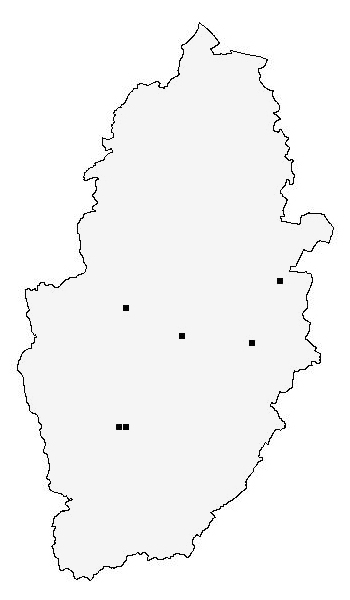 |
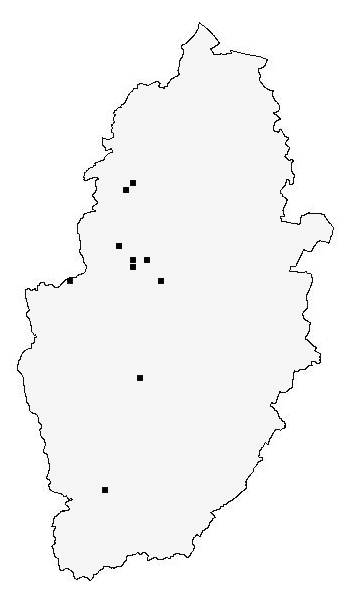 |
|
| DIPLODA - JULIDA - Julidae | DIPLODA - JULIDA - Julidae | |
| Ophyiulus pilosus (Newport, 1842) | Leptoiulus belgicus (Latzel, 1844) | |
| Nottinghamshire distribution: A common Millipede in parts of south Nottinghamshire. Recently found at Attenborough NR (Sexton, T.) but many records came from the Trent Valley in the late 1960's and early 1970's (Jones, P.E. and Barber, A.) Nottinghamshire's most northerly record is presently from Meden Vale in 2017 (Pendleton, T.A. and Pendleton, D.T.) | Nottinghamshire distribution: Added new to the Nottinghamshire list in February 2018, when found in a suburban garden at Mapperley. (Pendleton, T.A. and Pendleton, D.T.) | |
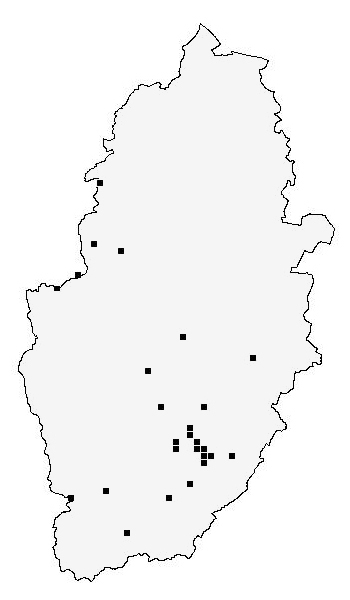 |
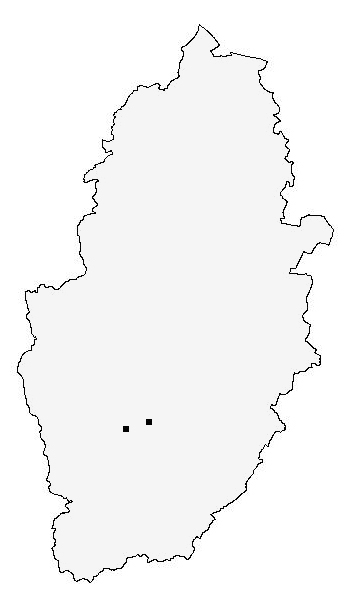 |
|
| DIPLODA - JULIDA - Julidae | DIPLODA - JULIDA - Julidae | |
| Allajulus nitidus (Verhoeff, 1891) | Cylindroiulus britannicus (Verhoeff, 1891) | |
| Nottinghamshire distribution: For 50 years, this Millipede was known from Nottinghamshire on the basis of records from Attenborough NR in 1967 and 1970 (Evans, M.). More recently, there was a record of two taken from under Heather at Rainworth Heath in October 2020 (Pendleton, T.A). | Nottinghamshire distribution: Not recorded in Nottinghamshire until as recently as 2014, when it was found near Market Warsop and Rainworth Heath (Pendleton, T.A. and Pendleton, D.T.) The number of records has increased since, with most records coming from the Sherwood Forest area. | |
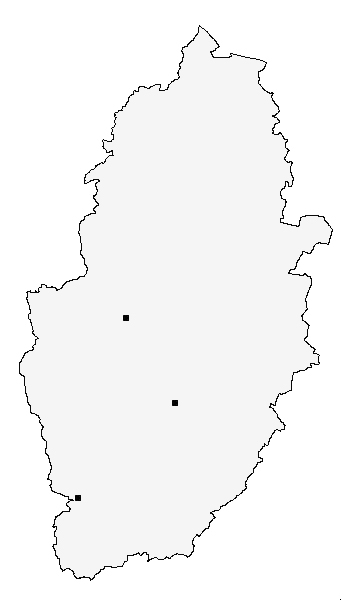 |
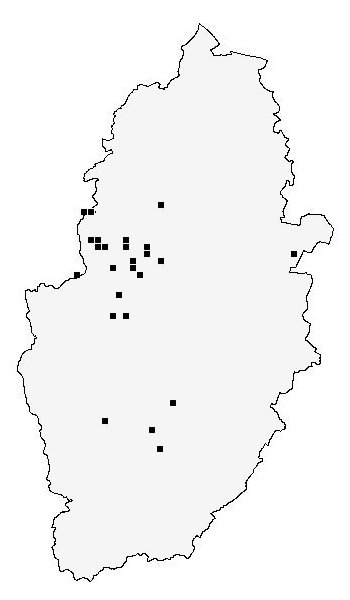 |
|
| DIPLODA - JULIDA - Julidae | DIPLODA - JULIDA - Julidae | |
| Cylindroiulus caeruleocinctus (Wood, 1864) | Cylindroiulus punctatus (Leach, 1815) | |
| Nottinghamshire distribution: Recorded from numerous sites, including Newstead Abbey, Sherwood Forest, Gamston Wood and Bevercotes Pit Wood, all in north-west Nottinghamshire. Found to be widespread between Nottingham and north of Mansfield. | Nottinghamshire distribution: Very common and widespread. Probably found throughout Nottinghamshire and in a wide range of habitats. Is also recorded from suburban gardens, where it can be found under logs etc. Well recorded from Sherwood Forest and the Bingham/Trent Valley area. | |
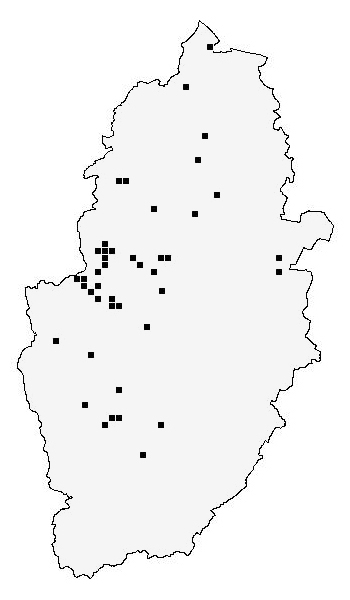 |
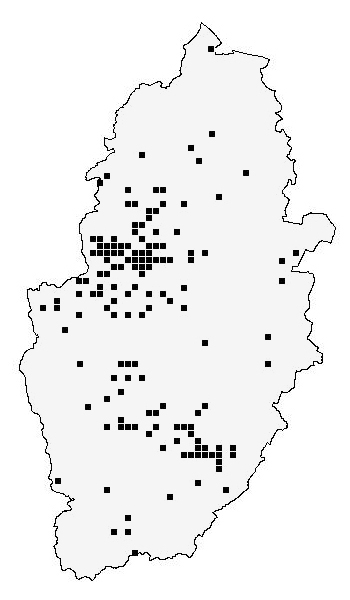 |
|
| DIPLODA - JULIDA - Julidae | DIPLODA - JULIDA - Julidae | |
| Brachyiulus pusillus (Leach, 1815) | Ommatoiulus sabulosus (Linnaeus, 1758) | |
| Nottinghamshire distribution: The relatively small number of county records suggest that this Millipede is uncommon, but probably quite widespread in range throughout much of Nottinghamshire. Recent records have come from Hills and Holes SSSI at Market Warsop and Stoke Bardolph in 2014 (Pendleton, T.A. and Pendleton, D.T.) Moorbridge Pond NR in 2001 (Kirby, P.) and Newark in 1969 (Jones, P.E.) | Nottinghamshire distribution: A large and easy to identify Millipede. It is very common in the Sherwood Forest area, but has also been recorded from several sites in the south of Nottinghamshire. These include Attenborough NR in 2009 (Rogers, R.) Netherfield Lagoons in 2012 (Netherfield Wildlife Group) Ruddington in 1969 (Jones, P.E.) | |
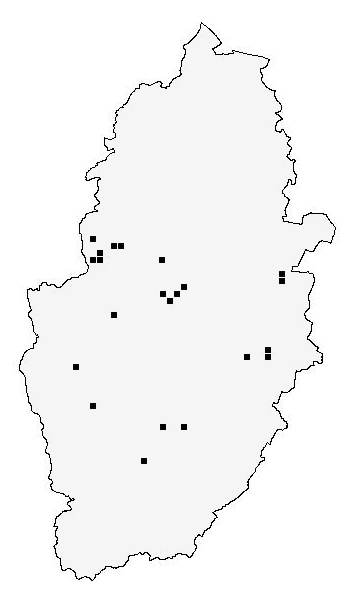 |
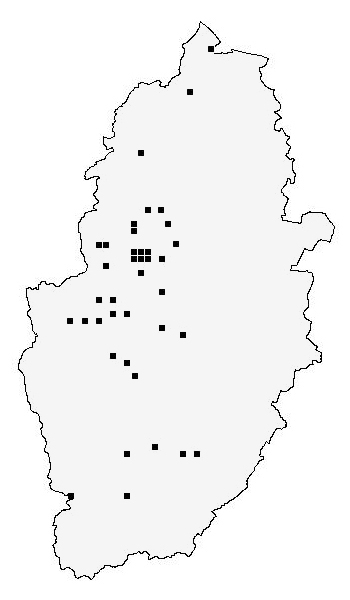 |
|
| DIPLODA - JULIDA - Julidae | DIPLODA - JULIDA - Nemasomatidae | |
| Tachypodoiulus niger (Leach, 1814) | Nemasoma varicorne (C.L.Koch, 1847) | |
| Nottinghamshire distribution: This is probably the most widespread Nottinghamshire Millipede and found in all habitat types. Very well recorded in both Sherwood Forest and Bingham areas of the county, but will occur anywhere under logs and stones etc. | Nottinghamshire distribution: Formerly rare, with three county records from Whatton and Radcliffe-on-Trent in 1969 (Jones, P.E.) and at Sherwood Forest in 1970 (Jones, P.E.). Now being recorded at several other sites, but seemingly not common. | |
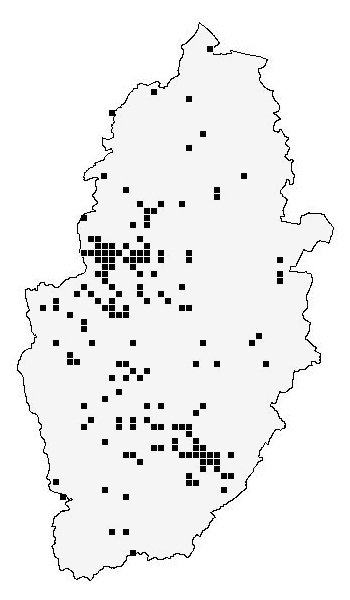 |
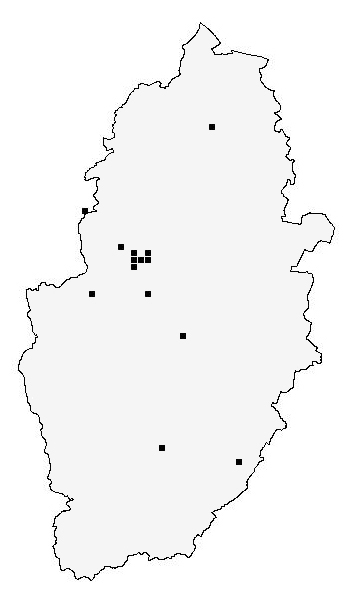 |
|